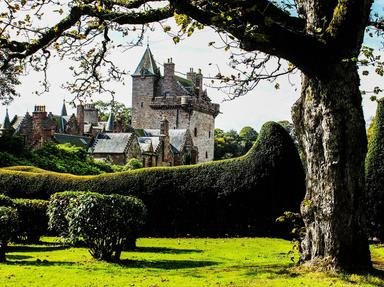Quiz Answer Key and Fun Facts
1. In 1812 Henry Bell began the first passenger steamship service in Europe when his ship sailed between Greenock and Glasgow on the river Clyde. What name did he give his ship?
2. One of the greatest changes in Scottish society in the nineteenth century was the Highland Clearances, when people were removed from their crofts to make way for the grazing of sheep, which was more profitable than letting small plots of land. One of the most famous of these clearances took place in April 1819, in which Highland glen?
3. Which Scottish literary figure became famous first as a poet before publishing the Waverley series of novels from 1814?
4. Blackband ironstone, which contains seams of coal as well as iron ore, became the basis of the Lanarkshire iron and steel industry only after a new invention by J.B. Neilson in 1828. Which invention?
5. Many nineteenth century Scots made their names overseas. Andrew Carnegie, born in Dunfermline in 1835, made his fortune in the USA and is now remembered as a philanthropist. In which industry did he make most of his money?
6. What name was given to the schism that took place in the Church of Scotland in 1843?
7. In 1872 the first international football (soccer) match took place in Glasgow between Scotland and England. Which team provided all the players for the Scottish team?
8. Which politician is often regarded as having revolutionised election campaigning with his "Midlothian Campaign" of 1879-1880?
9. On 28 December 1879 a rail bridge over a Scottish river collapsed while a train was passing over it, resulting in the deaths of everyone on board. Which river was the train crossing?
10. Which book by Robert Louis Stevenson, published in 1886, was inspired by the career of the Edinburgh craftsman and city councillor, William Brodie, who at night doubled as a burglar?
Source: Author
Quizaddict1
This quiz was reviewed by FunTrivia editor
bloomsby before going online.
Any errors found in FunTrivia content are routinely corrected through our feedback system.

